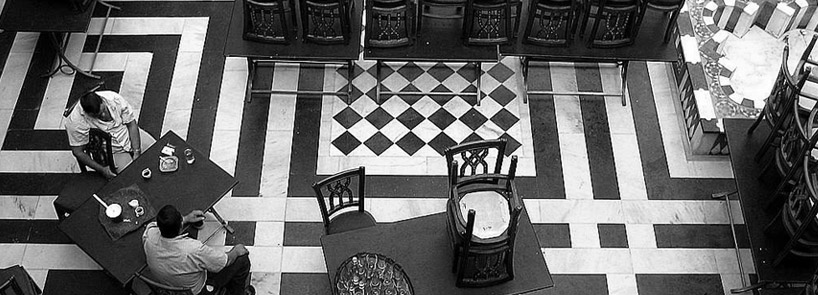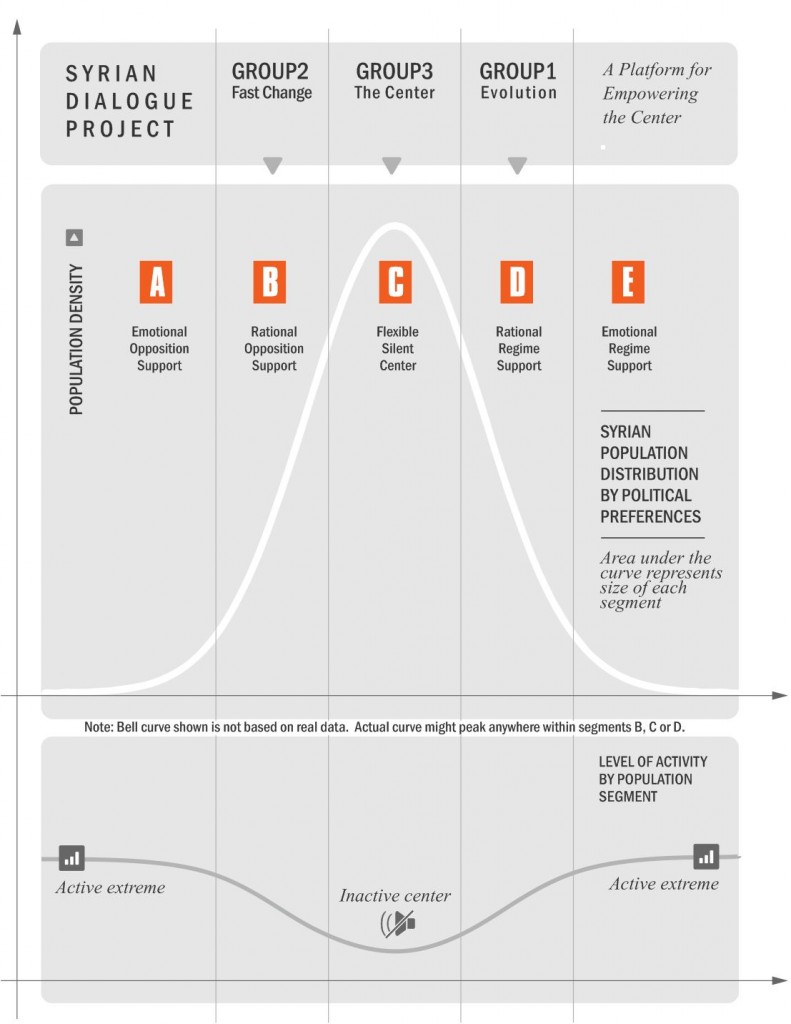About the Project
INTRO
The Syrian Dialogue Project is an initiative by a group of Syrians from inside and outside Syria that aims to provide a platform for sharing and debating the views of “the silent majority” in Syria.
Most of the active Syrians speak or act on behalf of two extremes which are driven through their emotional systems where fear or aggressive tendencies determine personal and collective group choices. The center, on the other hand, is more flexible, prudent, realistic and pragmatic. It is also probably the largest segment of the Syrian people. Therefore it is crucial that this group of Syrians is empowered with a platform to help it participate in the shaping of the narrative of the crisis and in helping suggest moderate proposals for ending the complex crisis.
FIRST PHASE / METHODOLOGY
Phase 1 of the project attempts to answer the essential question:
“At this time of change, what are the Syrian people trying to achieve? What are they trying to preserve?”
The two sides of the conflict, in addition to all the non-Syrian players actively involved in the conflict tried to promote their own highly biased interpretations of what the Syrian people want. Everyone seems to assume or suggest that the Syrian people simply want what he or she wants. To the regime’s camp, the Syrian people want to continue to resist Israeli hegemony and to support Palestinian and Lebanese resistance groups and to defeat the foreign conspiracy against Syria. To the opposition’s side the Syrian people want nothing more than to topple a dictator. To the supporters of the opposition in the west, the Syrian people want to topple the regime and replace it with one that is friendly to the west and hostile to Iran and Hezbollah. To some religious fundamentalists, the Syrian people want a more pious President and a return to old values and interpretation of Islam.
Although a scientific opinion poll is the best way to understand what the Syrian people have on their minds today, the current situation in Syria makes that option impossible to pursue.
To try to get closer to understanding what the Syrian people want, and more specifically what the silent majority of the Syrian people want, three groups were formed.
Group1: Ten individuals describing themselves as evolution/reform advocates. They might or might not be supporters of the regime, but they are flexible enough and open to the opposition provided nothing threatens Syria’s integrity, foreign policy, and its secular nature. The group includes prominent authors and artists in addition to activists.
Group2: Ten opposition figures and opposition activists. They are known as the “patriotic” secular opposition. Those opposed to foreign intervention and opposed to the role of religious fundamentalists.
Group3: Twenty individuals with centrist views and with considerable experience in working on dialogue, development, and other fields that help them act as moderators between Groups 1 and 2
The figure below explains the fit between the three groups and the three segments at the center of Syrian politics today: Segments B (rational opposition supporters), C (the center, or the undecided), and D (rational regime supporters). The figure also suggests that the center has been much quieter than the two extremes throughout the crisis.
Various members of Groups 1 (reform) and 2 (change) suggested one or more answers to the questions we posed. We requested that each “answer” should deal with one topic or issue, not more. Topics could be “fighting corruption”, “stabilizing the country”, “meaningful political reforms” …etc.
After the previous stage was terminated, members of the center group voted on each of the 74 items/answers provided by the members of the two other groups.
Each item was voted on three times:
- Importance: Significance of each item/topic to Syria and the Syrian people
- Priority: Urgency of tackling the issue in that item.
- Feasibility: Probability of success if issue is tacked
The reason for rating each item as above is that we wanted to try to produce a sorted list of items that we think the moderate center of the Syrian people would like decision makers to take on and not only a theoretical list of dreams that might not be a priority and might not be easy to tackle with any hope of success. That is why “priority” and “feasibility” were introduced as variables that we tried to assess through the average votes of our group3 (center) members.
To help us sort the 74 answers, we used this formula:
Final score = [(importance score + priority score)] X feasibility score.
The above formula is based on theories on decision making from applied psychology research such as those proposed by Noble Prize winner Herbert A. Simon.
The 74 items/answers proposed by groups 1 and 2 members were sorted from most significant, urgent and doable, to the least. This list can be found here. Visitors to the project’s site can change the rankings of the 74 answers by selecting from a dropdown list how they want to rank the answers. For example they can be optionally be ranked by importance, priority, or both.
Finally, members of the center group reduced the 74 items proposed by the two other groups to a final TOP20 list. The list tried to preserve the rankings of the original 74 answers but grouped similar answers then captured opinions expressed by both sides in an attempt to form a balanced final list in a language and content that does not offend or ignore the views of either side of the Syrian conflict.
The list, we believe, comes considerably closer to capturing both the aspirations and fears of the majority of the Syrian people within the wider center while taking into account the priority and practicality of tackling each issue listed.


